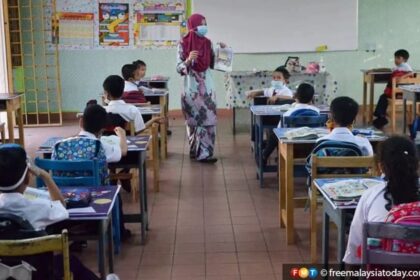Fatal Bullying in Indonesian Schools: A Deepening Crisis Demands Urgent Action
Indonesia is facing a disturbing surge in fatal bullying cases within its educational institutions, from elementary schools to universities. Recent high-profile deaths of students, allegedly as a result of bullying, have shocked the nation and exposed deep-rooted problems in the country’s school environments, regulatory systems, and cultural attitudes toward violence. This article examines the tragic incidents, the broader context of bullying in Indonesia, the government’s response, and the urgent need for systemic change.
- Fatal Bullying in Indonesian Schools: A Deepening Crisis Demands Urgent Action
- Recent Fatal Bullying Cases: Tragedies That Sparked National Outrage
- Bullying Beyond Elementary Schools: A Systemic Problem
- Statistical Evidence: A Worsening Trend
- Why Is Bullying So Prevalent in Indonesian Schools?
- The Psychological and Social Impact of Bullying
- Government Response: Regulations and Their Limitations
- Bullying in Higher Education: The Medical School Crisis
- The Role of Teachers and School Staff: Part of the Solution or the Problem?
- Community and Family Involvement: Building a Culture of Empathy and Prevention
- What Needs to Change? Recommendations for the Future
- In Summary
Recent Fatal Bullying Cases: Tragedies That Sparked National Outrage
In May 2024, two elementary school students—eight-year-old Khris Topel Butarbutar in Riau and 15-year-old Muhammad Raja Afnan in South Sulawesi—died following alleged assaults by their peers. Khris, a second grader at SDN 12 Buluh Rampai State Elementary School, reportedly suffered repeated bullying due to his religion and ethnicity. After being beaten by older students, he developed severe symptoms and died in hospital. His father, Gimson Butarbutar, recounted:
“He didn’t initially tell me what was making him sick, but when I spoke to his friends, they said he had been beaten by four older students about a week earlier.”
Less than a week later, Raja, a sixth grader at SDN Maccini Sawah State Elementary School in Makassar, died after a five-day hospital stay. His family reported multiple bruises and burn marks on his body, and Raja eventually revealed he had been assaulted by two elementary students and a junior high school student. Both cases are under police investigation, with authorities questioning numerous witnesses and conducting autopsies to determine the exact causes of death.
These are not isolated incidents. In February 2024, 14-year-old Bintang Balqis Maulana died after being beaten over three days by senior students at an Islamic boarding school (pesantren) in East Java. The case provoked outrage on social media and highlighted the vulnerability of students in both secular and religious educational settings.
Bullying Beyond Elementary Schools: A Systemic Problem
Bullying in Indonesia is not confined to young children or public schools. Fatal cases have been reported in Islamic boarding schools, junior high schools, and even universities. In August 2024, the suicide of a 30-year-old medical resident at Diponegoro University in Semarang, Central Java, brought attention to the toxic culture of bullying and hazing in higher education. The Health Minister, Budi Gunadi Sadikin, acknowledged:
“Bullying had become a deeply rooted problem among medical schools in the country, as he had received numerous reports on such practices.”
Surveys among medical residents revealed that one in five suffered from depression, with a significant number experiencing suicidal thoughts. The rigid hierarchy and seniority culture in medical training often lead to verbal abuse, excessive workloads, and financial exploitation of junior doctors by their seniors.
Statistical Evidence: A Worsening Trend
Data from multiple sources confirm that bullying and violence in Indonesian schools are on the rise:
- The Network for Education Watch Indonesia (JPPI) recorded 573 bullying cases in schools and Islamic boarding schools in 2023, more than double the 285 cases reported in 2022.
- The Indonesian Child Protection Commission (KPAI) reported that in 2024, approximately 21,000 children fell victim to violence, a 34 percent increase from the previous year. Of these, 17 percent occurred within educational institutions, with 9 percent involving peer bullying.
- A 2018 Programme for International Student Assessment (PISA) survey found that 41 percent of Indonesian students reported being bullied at least several times a month—nearly double the 23 percent average among OECD countries.
- The Federation of Indonesian Teachers’ Unions (FSGI) noted 30 bullying cases in 2023, up from 21 in 2022, with fatalities reported at both elementary and junior high school levels.
These numbers likely underestimate the true scale of the problem, as many cases go unreported due to fear, stigma, or lack of trust in authorities.
Why Is Bullying So Prevalent in Indonesian Schools?
Experts point to a combination of cultural, institutional, and systemic factors that contribute to the high rates of bullying and violence in Indonesian schools:
- Power Imbalances: Many bullying cases involve older or more powerful students targeting younger or more vulnerable peers. The imbalance of power is often reinforced by school hierarchies and a lack of effective supervision.
- Family and Social Dynamics: Dysfunctional family environments, authoritarian or permissive parenting styles, and exposure to domestic violence can increase the risk of children becoming either bullies or victims. Traumatic experiences such as parental loss or divorce also play a role.
- School Culture and Teacher Attitudes: Some teachers and school administrators fail to recognize the seriousness of bullying, dismissing it as harmless teasing or blaming victims for their own plight. In some cases, teachers themselves are perpetrators of violence, as seen in fatal incidents involving excessive punishment.
- Religious and Boarding Schools: Islamic boarding schools (pesantren) have been the site of several fatal bullying cases. The lack of oversight, unregistered institutions, and reluctance of authorities to intervene in religious settings contribute to a culture of impunity.
- Reporting Barriers: Victims often fear retaliation or are too ashamed to speak up. A 2022 study found that only 13.54 percent of students experiencing bullying felt brave enough to report it.
The Psychological and Social Impact of Bullying
The consequences of bullying extend far beyond physical injuries. Victims often suffer from depression, anxiety, low self-esteem, and social isolation. In severe cases, bullying can lead to suicide or long-term psychological trauma. Perpetrators, too, may be struggling with their own insecurities, family problems, or emotional pain, using bullying as a misguided way to assert control or seek validation.
Bronfenbrenner’s ecological theory highlights how a child’s environment—including family, school, and peer groups—shapes their behavior. Dysfunctional family systems, lack of communication, and absence of emotional support can all contribute to the development of bullying behaviors, both in perpetrators and victims.
Government Response: Regulations and Their Limitations
In response to the rising tide of violence, the Indonesian government has introduced several regulations aimed at preventing bullying in schools. In 2023, the Ministry of Education, Culture, Research and Technology mandated the formation of Violence Prevention and Handling Teams (TPPKs) in all educational institutions. These teams are supposed to protect students, investigate incidents, and provide support to victims.
However, implementation has been inconsistent and often ineffective. Many schools have not established TPPKs, and those that exist are frequently inactive except in the aftermath of high-profile cases. Education expert Anggi Afriansyah of the National Research and Innovation Agency (BRIN) observed:
“A lot of schools have not formed TPPKs. On the other hand, many TPPKs established in schools are not effective to prevent school violence as they’re only active when bullying cases occur.”
Teachers often lack training to recognize early signs of bullying or to intervene appropriately. Some still view bullying as normal childhood behavior or blame victims for their own victimization. The vastness and diversity of Indonesia, with its many cultures and remote regions, further complicate the consistent application of anti-bullying policies.
Bullying in Higher Education: The Medical School Crisis
The problem of bullying is not limited to primary and secondary schools. In recent years, several fatal cases have emerged from Indonesia’s medical schools and residency programs. The death of Dr. Aulia Risma Lestari, a junior doctor at Diponegoro University, and earlier cases such as that of Albertus Berfan at Airlangga University, have exposed a toxic culture of hazing, verbal abuse, and financial exploitation in medical training.
Surveys by the Health Ministry found that over 22 percent of medical residents suffered from depression, with a significant number contemplating suicide. The hierarchical structure of medical education, combined with long working hours and financial pressures, creates an environment where bullying is normalized and victims are reluctant to speak out.
Health Minister Budi Gunadi Sadikin has called for an end to the toxic seniority culture and promised to take firm action against bullies. The ministry has also launched a call center for reporting bullying and has taken disciplinary action against dozens of perpetrators. However, experts stress that real change requires transparency, acknowledgment of the problem, and a shift in institutional culture.
The Role of Teachers and School Staff: Part of the Solution or the Problem?
Teachers and school staff play a critical role in either perpetuating or preventing bullying. In some tragic cases, teachers themselves have been the perpetrators of fatal violence. For example, a 14-year-old student in North Sumatra died after being forced to do 100 squat jumps as punishment, and a 13-year-old pesantren student in Blitar died after being struck by a teacher with a wooden plank.
Experts argue that many teachers are under significant stress due to heavy workloads, low wages, and job insecurity. While this does not excuse violence, it highlights the need for better support and mental health resources for educators. Retno Listyarti, head of the FSGI advisory board, noted:
“There are laws that clearly ban violence against children, but it keeps on happening because it’s a mentality problem. Many of [these teachers] were victims of violence themselves growing up, but they don’t realize that this is a problem.”
Regular mental health check-ups for teachers, clear reporting channels for students, and ongoing training in violence prevention are essential steps toward safer schools.
Community and Family Involvement: Building a Culture of Empathy and Prevention
Addressing bullying requires a holistic approach involving families, schools, communities, and government. Parents must foster open communication with their children, instill moral values, and supervise their social interactions. Schools should implement firm anti-bullying policies, educate both students and staff about the dangers of bullying, and create a supportive environment for victims.
Peer counselors—students trained to support their classmates—can play a valuable role in providing emotional support and raising awareness. Community organizations and the media also have a responsibility to challenge the normalization of violence and promote a culture of empathy and respect.
What Needs to Change? Recommendations for the Future
Experts and advocates have called for a range of measures to address the crisis of fatal bullying in Indonesian schools:
- Stronger Enforcement of Regulations: Ensure that all schools, including religious and boarding institutions, comply with anti-bullying policies and establish effective prevention teams.
- Teacher Training and Support: Provide regular training for teachers on recognizing and responding to bullying, and offer mental health resources to reduce stress and prevent violence.
- Transparent Reporting and Accountability: Create safe, accessible channels for students and parents to report bullying, and hold both individuals and institutions accountable for failures to protect children.
- Community Education: Launch public campaigns to raise awareness about the dangers of bullying and the importance of empathy, respect, and non-violence.
- Research and Data Collection: Invest in research to better understand the prevalence, causes, and consequences of bullying, and use data to inform policy and practice.
In Summary
- Fatal bullying cases in Indonesian schools have increased, with recent deaths of students in both secular and religious institutions sparking national concern.
- Bullying is a systemic problem affecting all levels of education, including universities and medical schools.
- Statistical evidence shows a sharp rise in reported cases, but many incidents remain hidden due to fear and stigma.
- Cultural, institutional, and family factors contribute to the prevalence of bullying, and both victims and perpetrators often suffer from psychological trauma.
- Government regulations exist but are inconsistently enforced, and many schools lack effective prevention and response mechanisms.
- Teachers and school staff need better training and support to recognize and address bullying, and their own mental health must be prioritized.
- Holistic solutions involving families, communities, and government are essential to create safe, supportive learning environments for all children.
- Urgent action is needed to break the cycle of violence and ensure that Indonesian schools fulfill their promise as places of learning, growth, and safety.












